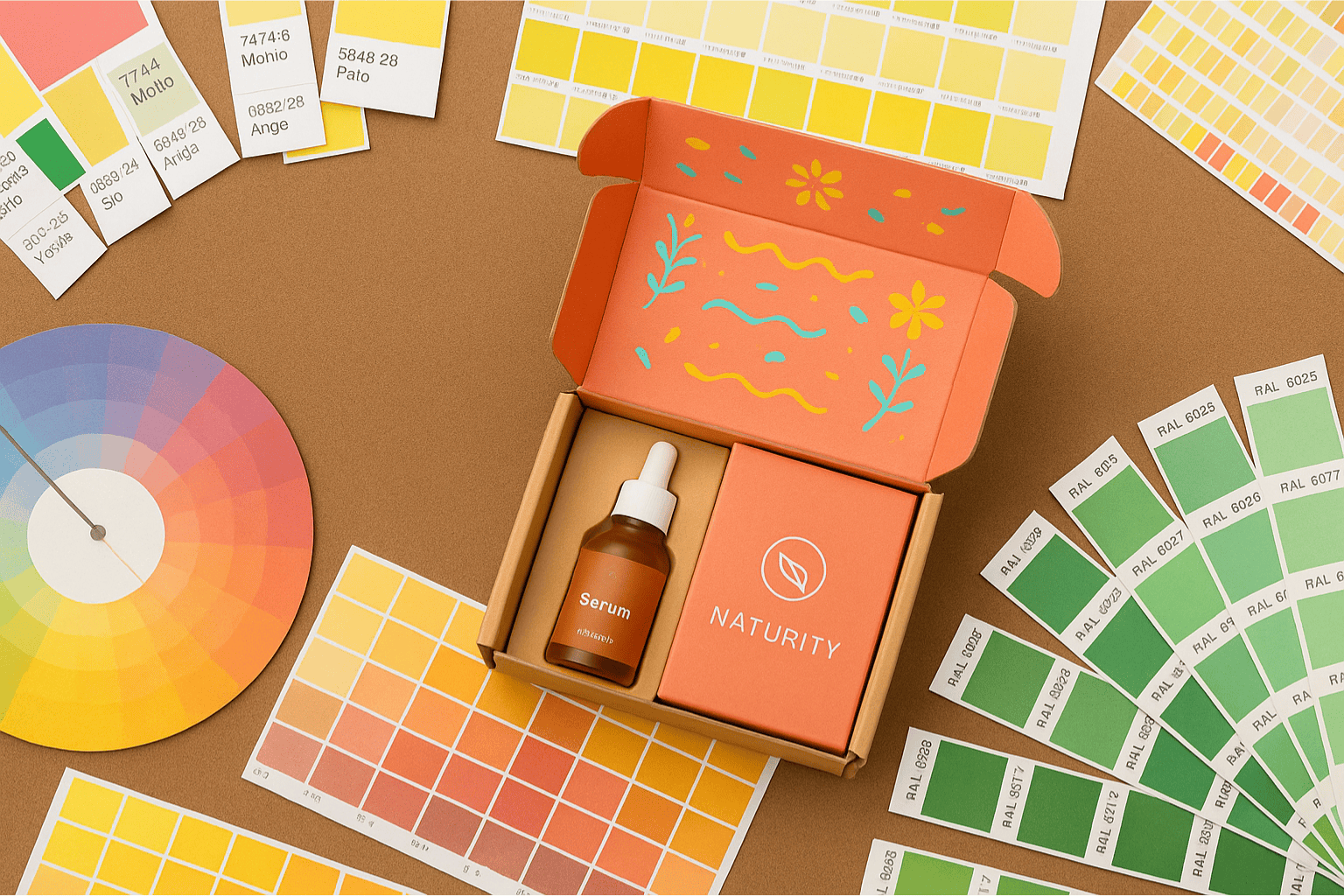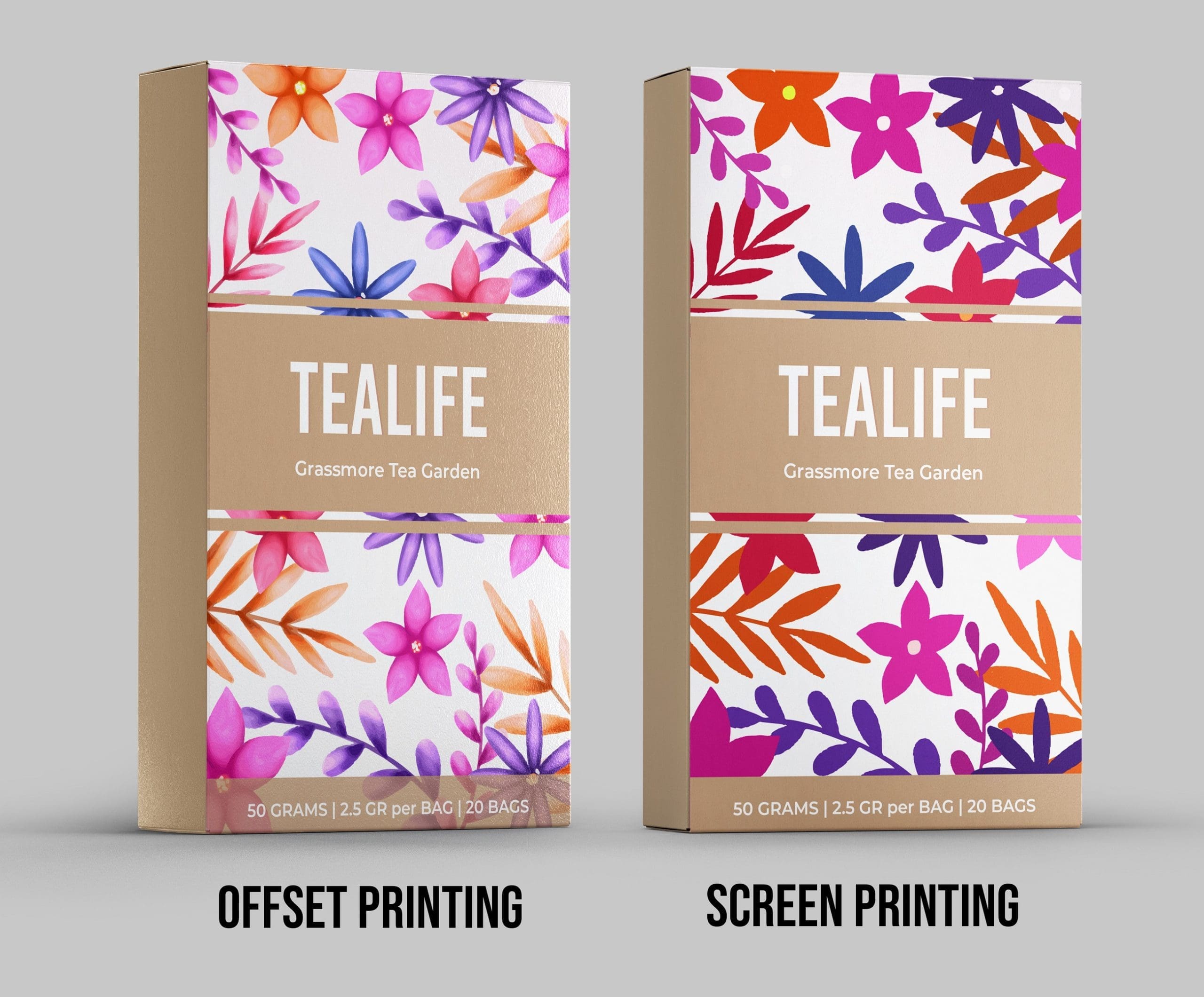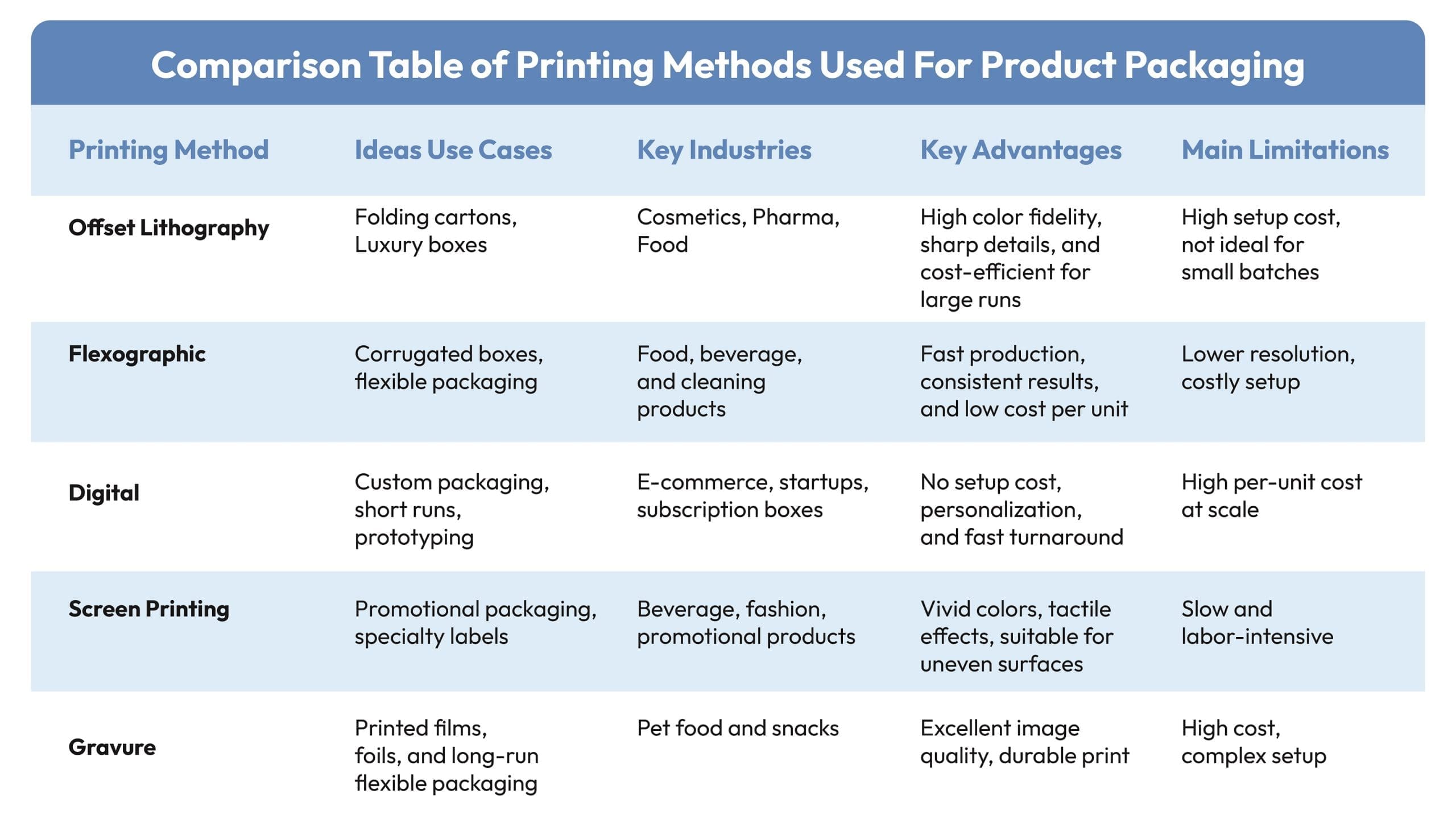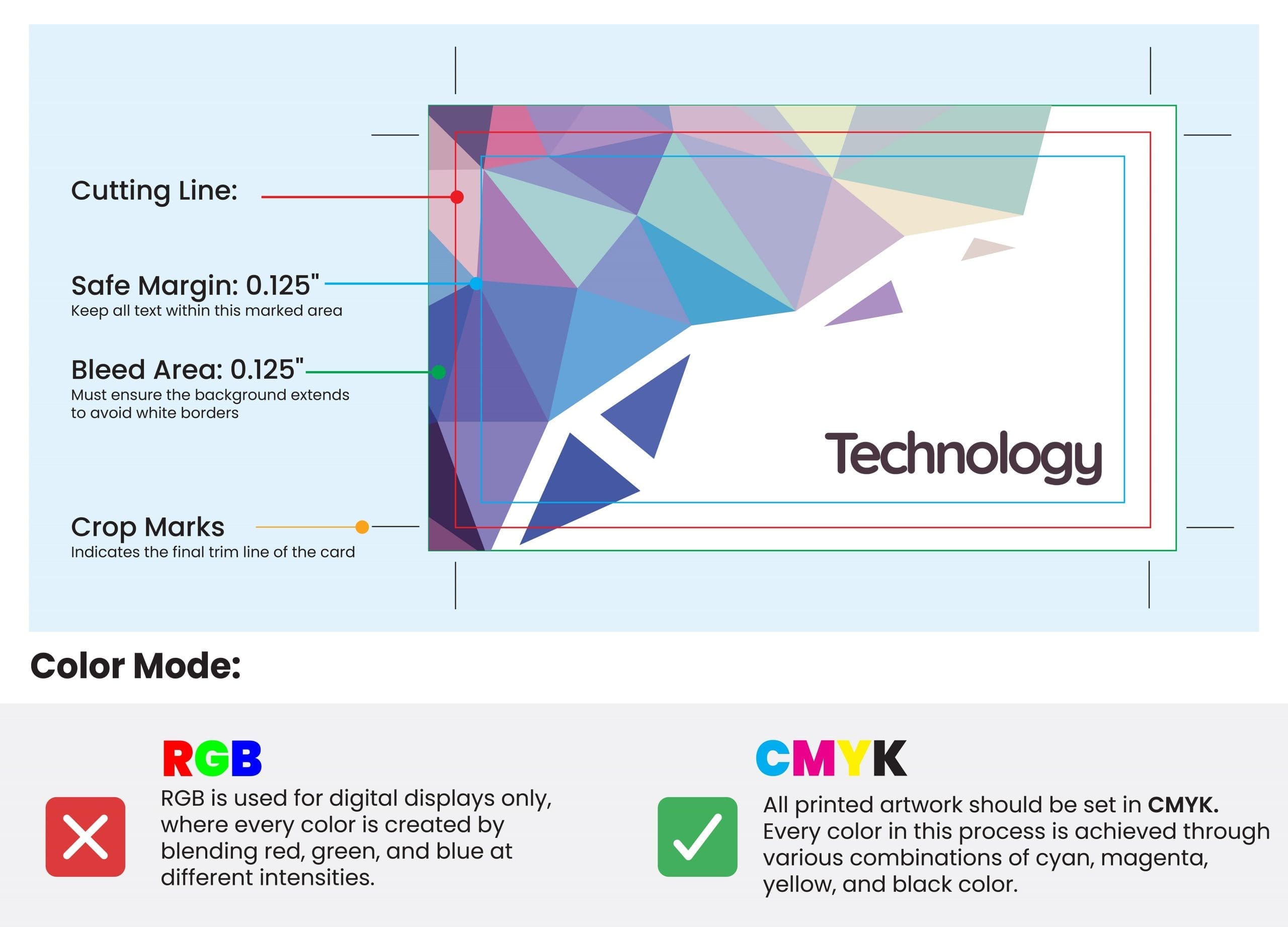
Product Packaging Printing Methods for Better Unboxing Experiences

This is a guest post from Mark Luis of Printingblue. Mark believes in fostering strong client relationships and providing strategic guidance to help businesses harness the power of print and packaging solutions to achieve their goals.
Product packaging is often the first touchpoint between a brand and its customer, and the print quality can make or break that impression. From eye-catching designs to tactile finishes, printing technologies have evolved significantly, enabling businesses to craft packaging that is not just functional but also emotionally engaging.
This article explores key printing methods used for manufacturing product packaging and provides an overview of how thoughtful execution can turn unboxing into a memorable moment of connection with your customers.
Understanding the Role of Printing Methods in Product Packaging
As product packaging is often the first physical interaction a customer has with a brand, the choice of printing method can define how the product is perceived, how it communicates, and how likely the customer is to remember and share the experience. Choosing the right printing method starts with understanding what each method can achieve.
With so many printing options available, it is less about which method is best technically and more about which one fits your requirements. Some printing techniques offer sharper details, others are faster or more budget-friendly, and some techniques work better on unusual materials. The key is knowing what matters most for your project and letting that guide your choice.
Offset Lithography
Offset lithography is a widely used printing process in which the inked image is transferred from a plate to a rubber blanket and then onto the printing surface.
This method is known for its high precision and is best suited for large production volumes. Offset printing is frequently used in producing folding cartons, high-end product boxes, and luxury packaging. Industries such as cosmetics, pharmaceuticals, and gourmet foods utilize offset lithography to convey sophistication and maintain print consistency across large batches. While the initial setup cost can be high, it pays off in large runs, making it a smarter choice for mass production where vibrant colors and crisp details are required.
Digital Printing
Digital printing is the most flexible printing technique as it prints straight from a digital file, no physical plates are needed.
This makes digital printing perfect for short runs, prototype production, seasonal campaigns, or personalized packaging. Digital printing is especially popular with e-commerce brands and boutique businesses for thank you cards, labels, and gift cards, as it supports variable data printing. Every package can be unique, whether it’s a customer’s name, a special promo, or custom artwork. While the cost per unit can be higher, the creative freedom and speed make digital printing well worth it. When it comes to digital vs offset printing, the ideal choice depends on your print run size, timeline, and print quality expectations.
Screen Printing
Screen printing involves pushing ink through a fine mesh screen onto the target substrate.
Screen printing is typically used for bold, high-opacity designs, often on non-flat or textured surfaces. This method is favored in the promotional products industry and for specialty packaging that requires a tactile finish, such as limited-edition gift boxes, branded glass bottles, or textured labels. Though labor-intensive and slower than automated methods, screen printing can help produce unique textures and durability. In contrast to offset printing, which excels at smooth, high-resolution gradients and fine detail, screen printing primarily produces spot colors. While this allows for vibrant, bold prints, screen printing struggles to reproduce subtle color transitions, making it less suitable for photographic or highly detailed artwork.

Flexographic Printing
Flexography, or “flexo,” is a popular printing method that uses flexible plates to apply ink to various materials, from film and foil to paper and other non-porous surfaces.
Flexographic printing is especially useful for manufacturing packaging that must be produced quickly and consistently in high volumes. That’s why flexographic printing is a go-to choice for printing product packaging and shipping boxes for various industries, including the cosmetic, food, and beverage industries. Flexographic printing is very cost-effective for large print runs and flexible enough to keep up with fast-changing product demands. It is worthwhile noting that while flexographic printing is great for speed and scale, the print detail is not quite as sharp as what can be achieved with offset printing, and thus is not an ideal choice for printing high-detail artwork.
Gravure Printing
Gravure printing, or rotogravure, uses engraved cylinders to transfer ink to target surfaces.
It is one of the highest-quality printing processes available today and is typically used for large-scale projects. Primary users of this printing technique include industries in the consumer goods, pet food, and snack industries. The precision and quality of gravure are unmatched, but the costs and setup times make it viable only for large projects with recurring print needs.
Comparison of Common Printing Methods for Product Packaging
To simplify decision-making, here’s a side-by-side comparison of each method’s most relevant features across packaging types.

Each printing method delivers different advantages depending on your product type, scale of production, and branding goals. Understanding these methods in detail can help businesses make print production decisions that balance quality, cost, and time-to-market. Once the right printing method is selected, the next step is to develop the overall packaging presentation and unboxing experience. A well-executed unboxing experience can transform ordinary packaging into an emotional brand touchpoint.
Improving the Unboxing Experience
Unboxing isn’t just the physical act of ripping open a box, and if that’s all you’re thinking of it as then you’re missing a unique branding opportunity. Brands that invest in making this moment delightful often benefit from increased loyalty, repeat purchases, and social media buzz.
To enhance the unboxing experience, sensory and emotional engagement should be prioritized. Start with premium materials like foiled card or soft-touch laminated surfaces. Use structural design to create anticipation. Multi-layered packaging, such as an outer box, tissue wrap, and inner tray, can add a feeling of luxury.
Inside the box, well-designed inserts can hold products securely while also guiding the customer’s attention. These inserts can be digitally printed to include personalized touches like the customer’s name or tailored messages. In addition, add brand storytelling through interior prints or QR codes that lead to welcome videos, tutorials, or loyalty rewards.
Another key point in designing great packaging is environmental sustainability. Customers increasingly value eco-conscious choices. Using recyclable materials, water-based inks, and minimal filler, and clearly labeling these choices within your packaging, reinforces your brand’s values. If sustainability is a priority, digital printing with water-based inks or flexo on kraft paper might be ideal due to lower waste and recyclable substrates.
When executed well, unboxing evolves from a function to an event that extends your brand’s narrative. The right printing method, matched with thoughtful design, transforms everyday packaging into a memorable, shareable experience.
While the unboxing experience is where customers fall in love with your packaging, it’s only successful if the execution matches the intent. Even the best designs can be compromised by common printing errors – misalignments, color shifts, or low-resolution prints can break the illusion and damage brand perception. To bring your unboxing vision to life flawlessly, it is crucial to be aware of these avoidable pitfalls during production.
Top Printing Mistakes and How to Avoid Them
Even the most well-crafted packaging concepts can fall short if the actual printing process is mishandled. Whether it is a color mismatch or an alignment issue, printing errors can be costly and damage the customer experience. Below are common mistakes brands encounter during the packaging print process, and how to prevent them with foresight and communication.
1) Designing in RGB Instead of CMYK
One of the most frequent errors is designing artwork in RGB color mode, which is optimized for digital screens. When RGB files are printed, colors often shift unpredictably. To ensure color accuracy, all design files should be converted to CMYK early in the process, and brand colors should be checked using Pantone or CMYK values.
2) Ignoring Bleed and Safe Zones
Neglecting to set up correct bleed and safe zones can result in critical content being trimmed or white edges showing around the design. A standard 1/8 inch (3mm) bleed beyond the trim line should be included, and all key design elements must be placed within the inner safe zone to avoid accidental cuts.
3) Using Low-Resolution Images
Images pulled from the web or resized improperly can print blurry or pixelated. For professional print quality, all images should be at least 300 DPI at actual size. This ensures sharpness and avoids a poor visual impression that undermines your brand.
4) Misaligned Artwork on Die Lines
Packaging designs that straddle folds, flaps, or cutouts need to be carefully aligned. Without attention to die-line templates, logos or artwork can end up off-center or partially cut. Always work with manufacturer-provided die lines and test the final layout using 3D mockups or samples.

5) Mismatched Printing Method and Material
Different substrates absorb ink differently, and not every printing technique suits every material. For instance, detailed digital printing might not yield crisp results on rough kraft paper. Understanding material-print compatibility avoids poor print results and wasted inventory.
6) Forgetting Required Legal Labels
Omitting critical elements like barcodes, regulatory warnings, recycling icons, or nutritional info can lead to compliance issues and consumer confusion. Before finalizing a print file, verify labeling requirements for your product category and region.
7) Overlooking Environmental Durability
If your packaging will face heat, humidity, or sunlight, you need inks and finishes that can handle those conditions. Inks may smudge or fade if not chosen for the right environment. Discuss your product’s lifecycle with your printer to select protective coatings or UV-resistant inks as needed.
8) Skipping a Printed Sample
Approving artwork digitally without reviewing a printed sample is risky. Color shifts, alignment problems, and finishing issues often don’t show up on screen. Always request a printed proof or production sample before committing to a large batch.
By identifying and avoiding these common errors, you can save costs, prevent production delays, and maintain a high standard of brand presentation. Print quality is about creativity, but also execution and precision.
Invest in Your Product Packaging To Make an Impression (And More Loyal Customers)
Great packaging doesn’t just protect, it connects. By understanding how each printing method pairs with materials and brand goals, businesses can deliver consistent quality while enhancing customer experience. Whether you are launching a luxury product or testing a short-run seasonal box, matching your print strategy with execution is essential. Start with your audience, choose your substrate wisely, and test before scaling. Because when packaging performs well and looks unforgettable, it doesn’t just serve the product – it elevates the brand.
To summarize: Design with purpose. Print with impact. Deliver an experience your customers will remember and share.
